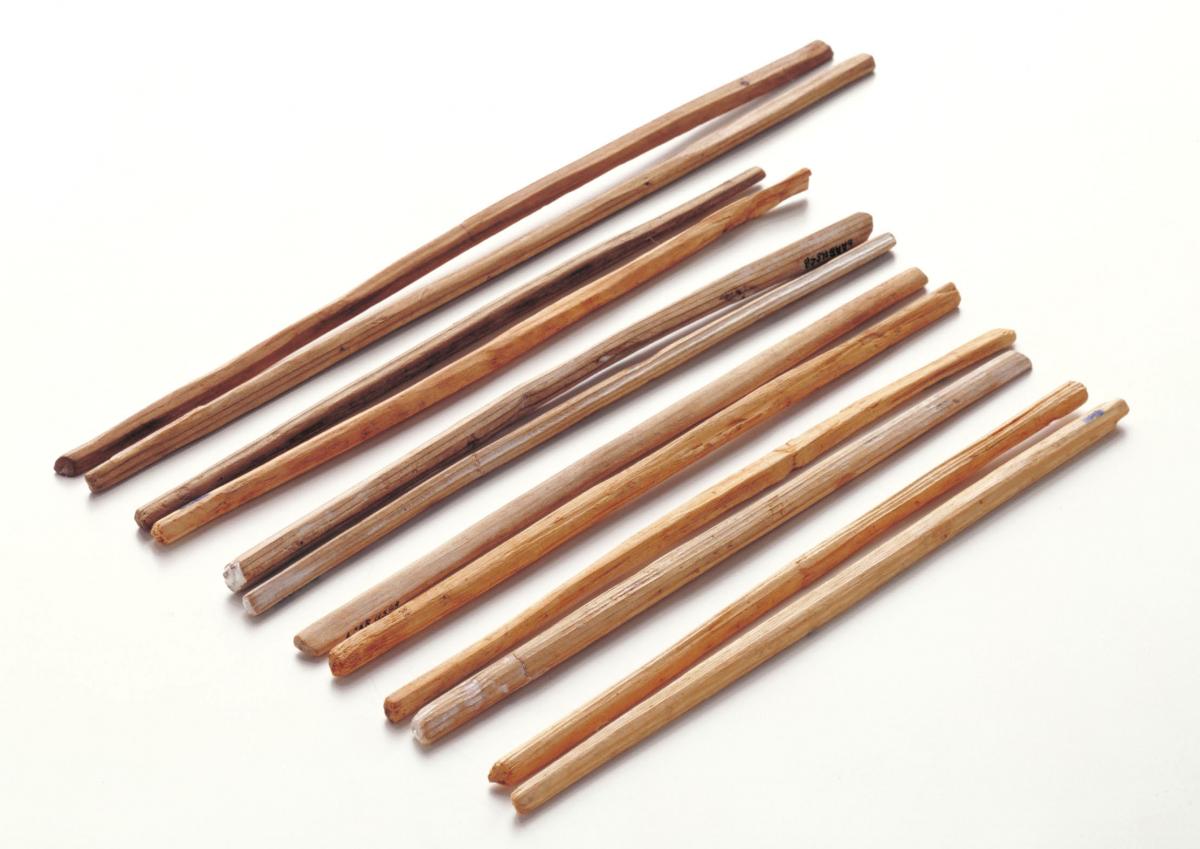The Residents of Heijo-kyo Part 2
The Residents of Heijo-kyo Part 2
■ The Delicious Foods of Heijo-kyo
In the past, the only clues to the culinary lifestyles of the people of Heijo-kyo came from historical documents. That changed, however, when many wooden tablets listing ingredients were unearthed here, along with bokusho-inscribed earthenware, preserved trash and food leftovers, and even fecal matter, all of which provide much information about life in the ancient capital.

○ Meals of the Aristocracy

The food consumed by the nobility tended to consist of elaborate dishes prepared from ingredients procured from numerous different regions. Besides fine quality meat and seafood, the aristocrats also enjoyed a rare delicacy known as so, an ancient type of cheese. The food was consumed on luxurious lacquerware, metal vessels and other tableware.
○ Meals of the Common Folk

The foods of average residents were quite simple in nature. Their main staple consisted of unmilled steamed rice, while the soup they consumed may have contained green vegetables and other ingredients. Salt was the primary seasoning used.
○ Use of Chopsticks

Excavation of the Fujiwara Palace and the Fujiwara-kyo capital revealed few chopsticks, which were in greater presence in excavations of Nara Palace and the Heijo-kyo capital. The many chopsticks excavated at Nara Palace were likely used in the meals served to government officials.
○ How Were Food Ingredients Acquired?

During the Nara Period, specialty produce from throughout Japan was brought to Nara Palace as tax payment. Portions of such foods collected at the Palace as tariffs were also distributed around the markets, and so various different foods could be purchased. For the aristocracy, in addition to receiving food supplies as salary, they also obtained ingredients from outlying territories. Common folk are believed to have purchased the foods available in town, as well as obtaining other supplies from traveling peddlers, home gardens and additional sources.
○ What Did the Cooking Taste Like?

Foods of the Nara Period were rarely seasoned during the preparation process. Instead, it is thought that diners would add the seasonings of their choice while eating. Unearthed in excavations have been mokkan (wooden tablets) inscribed with the names of seasonings believed to have been the original forms of salt, vinegar, miso, soy sauce and other condiments.
○ The World of Culinary Delicacies

These dishes were selected from the names of the foods and ingredients written on the mokkan (wooden tablets). In an era without refrigerators, ice was a particularly valuable resource during the summer. Extensive efforts were also apparently devoted to transporting and preparing abalone, sea squirt shellfish and other seafood to the inland location of the Heijo-kyo capital.
○ Food Leftovers Enduring Time

Excavations of garbage pits in the capital have produced findings of various types of vegetable and fruit seeds and peels, animal and fish bones and skins, and other scraps. Such apparent leftovers, garbage, substances contained in human waste and other food remains have survived for more than 1,300 years without rotting away. Careful studies of these substances have yielded substantial hints about what the people of the ancient capital used to eat. Presented here are some of the actual items unearthed around Nara Palace.
○ Food and Health Viewed through Human Stool

There is still little reliable information about the restroom conditions within the capital. Frequently unearthed in ditches around the grounds, however, have been long narrow strips of wood likely called chugi, used to wipe in place of toilet paper. Microscope examinations of soil from these sites have revealed the eggs of parasites often seen in people who fail to adequately cook freshwater fish and meat. In this way, the remains of human stool offer clues into the diets, diseases and other information about the people of that era.
○ Exhibit Information
Displayed on your right are stoves, utensils and other items used for cooking in the Nara Period. On the left are earthenware urinal pots and chugi wood strips used for wiping before toilet paper was invented.
○ Hands-on Information
“How do we know what foods were consumed in the past?” “The story of so, an ancient cheese” “What are the foods recorded on mokkan (wooden tablets)?” Please find answers to these and other basic questions on the revolving and flip panels on the counter.




